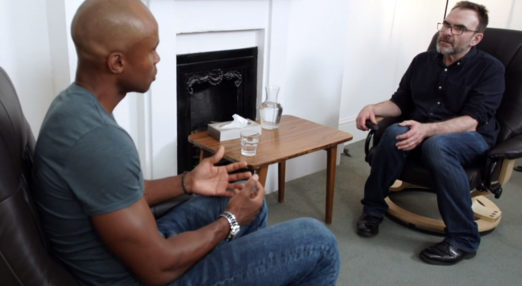Self-harm
Self-harm can be a way of both expressing and managing the physical and psychological pain you are experiencing.
Many people say that self-harm serves a purpose. This can be to do with the idea that feeling physical pain seems easier than dealing with intense emotional or psychological pain.
Or it’s a way of feeling something when they feel emotionally numb.
Self-harm can be quite controlled and deliberate with the specific purpose of causing pain and/or injury. Some forms of self-harm are easily hidden as ‘normal’ behaviour, such as overwork, over-training or taking extreme risks. Others are more visible such as cutting or bruising yourself.
Many men harm themselves in some way, by smoking, drinking alcohol, working too hard or not sleeping enough. For some people this self harm is more apparent and can be quite severe.
Although people rarely talk about self harm it is relatively common, little understood, very distressing, and sometimes dangerous.
Self harm is also known as self-injury, which is when someone harms their body without wanting to die. Some men who self harm also have suicidal thoughts. Most feel that there is a difference between suicidal acts and acts of self harm. They may say “I don’t want to die, I just need to get rid of these terrible feelings”.
Some men may harm themselves many times each day which can involve a lot of ritual and they can feel addicted to the self harm behaviour. Others only do it a few times when under huge emotional stress.
There is a cliche that self harm is mainly an issue for females. In fact research shows that it depends on the age group. If you look at adolescents, there are some reports that indicate females may report more self-injury. But in early adulthood and adulthood, there is no difference in prevalence according to gender
Forms of self harm can include:
- Cutting or burning
- Pulling out hair or eyelashes
- Punching yourself, or objects
- Biting, plucking or scratching your skin
- Misusing medicine or drugs
- Over exercise
- Eating or drinking in an unhealthy way
- Self neglect
You may well not see the thing you do here. There are endless different ways of self harming. It may be dramatic, hidden, or ritualistic. It can be permanently mutilating, and may seriously disfigure the body before people can stop, or it can go on for many years without causing serious physical harm.
The key thing is that if you reading this then you may have got to the point where you want to stop or consider alternatives.
Carers, friends, relatives or co-workers may react to self harm in various ways. Some responses are helpful and some less so.
Feelings of others can include:
- Fear
- Anger
- Worry
- Guilt
- Feel helpless
- Detachment / coldness
- Confusion
- Not caring
- Feeling criticised or attacked
Actions of others can include:
- Setting rules and restrictions
- Taking people to hospital
- Being extra sensitive
- Withdrawing
- Talking about it too much or not enough
- Threatening to withdraw or leave
- Stepping in to try and ‘solve’ the situation
- Offering more support
- Being intrusive
- Challenging you to self harm more
There are ways to request more helpful responses from people you choose to tell.
Self harm is common amongst men who have experienced sexual abuse or assault. People often don’t know why they harm themselves at the time. But you may recognise some of these reasons men have said that they do it:
To manage moods or feelings
- To escape from emptiness, depression, shame, feeling ‘spaced out’ or unreal
- To relive pend up tension, pressure or anger
- To feel something – to know you still exist
- To feel in control
- To express, or block sexual feelings
- To forget something
- To stop myself from killing myself
- To get a thrill or adrenalin rush.
To fit in with beliefs or thoughts
- To punish yourself because you feel you are ‘bad’.
- To maintain negative belief
- To escape from feelings of guilt
- To cope with the expectations of others for example regarding our sexuality or arranged marriage
To communicate
- To let people know how bad things are
- To make your body show your pain
- To express anger towards others and yourself, but on your own body
- To obtain and maintain a response from others that you feel you wouldn’t otherwise get
- To punish others via your own body
- To get people to listen to you
- To feel part of a group and have an identity
Men have said that they see self harm as a way of surviving. It may be a means of coping with unbearable pain. It can be very addictive and can be a difficult pattern to change.
Sadly some people do kill themselves whilst self harming. This is most common in those who take overdoses or tablets or medicines. Misusing medicines or tablets can be very dangerous. Even small ‘overdoses’ can kill.
Even if it feels like it is helping you manage at the time, the problem is it will only work for a short period and doesn’t address the route issues. Self-harming behaviours can also escalate over time, as both tolerance and desire for pain increases. In some cases it can lead to permanent injury, disfigurement or accidental suicide.
If you are using self harm to help you tolerate and contain distress, learning some self help tools will offer you more healthy and helpful ways to achieve the same goals.
Or you may like to hear from others about how they found an alternative way through.






